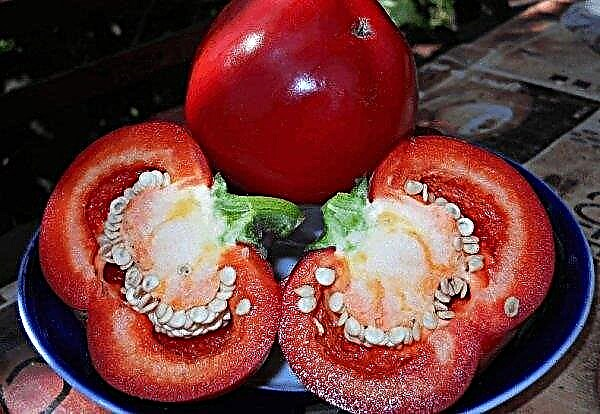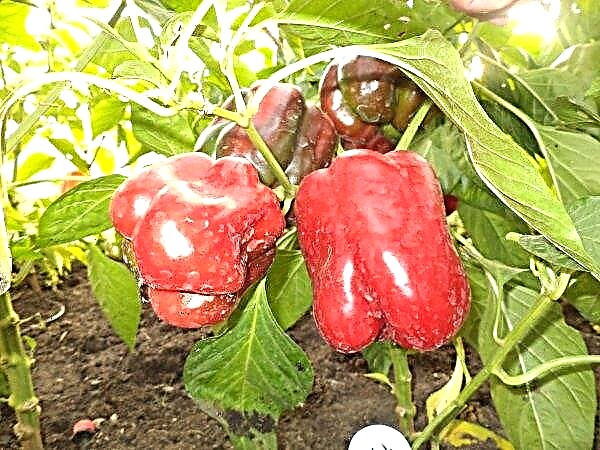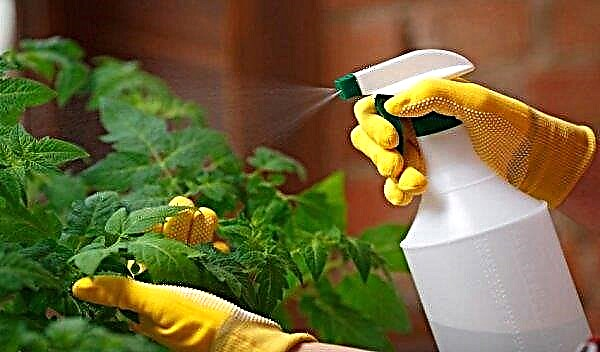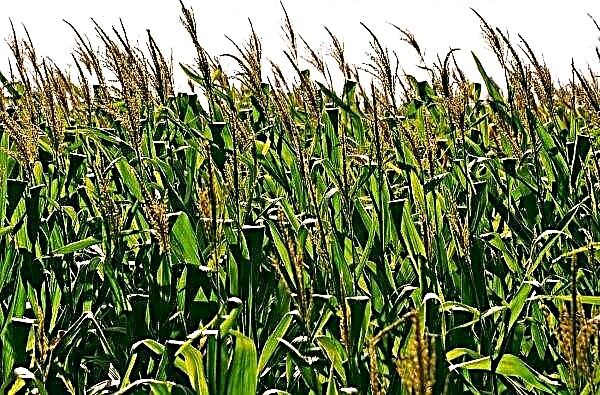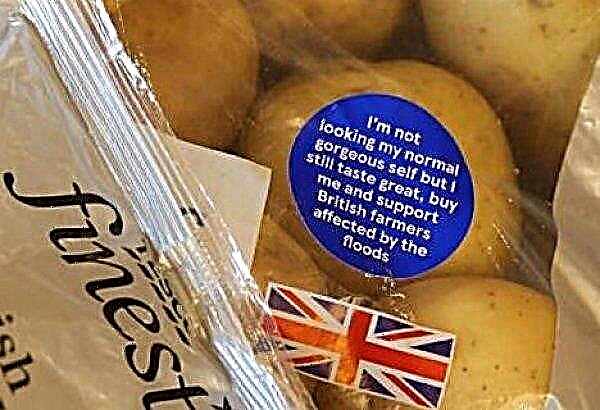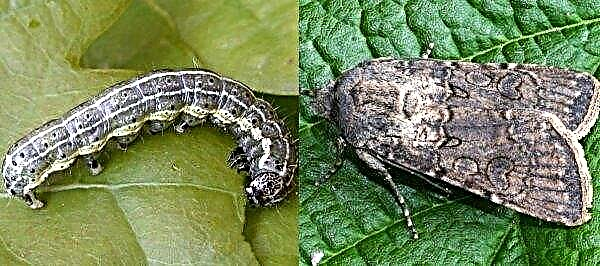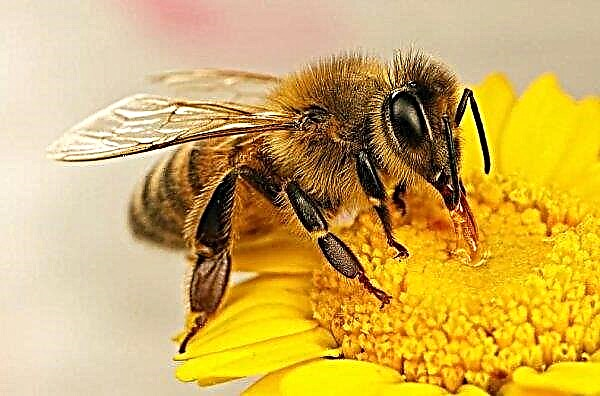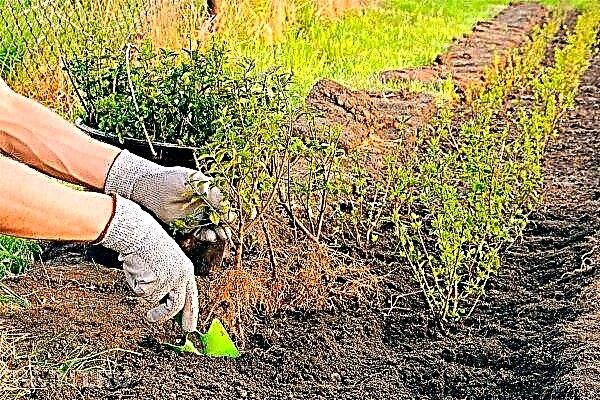Cow dung is a popular organic fertilizer that is used universally to increase productivity. Despite the many modern effective fertilizers, organics still continue to be relevant. In this article, a detailed description of mullein, its types and method of application will be considered.
Chemical composition
Manure is characterized by a rich chemical composition, due to which a positive effect is achieved from the use of the material as a fertilizer.
| Component | The number of grams per 1 kg of manure |
| Nitrogen | 3,5 |
| Calcium | 2,9 |
| Phosphorus | 3 |
| Potassium | 1,4 |
| Magnesium | 1,1 |
| Sulfur | 0,9 |
Did you know? In India, manure is used to make tablets. It is the basis of the tabletted means, in contrast to the usual chalk for us.
Soil benefits
The use of mullein as a fertilizer gives an excellent result:
- enriches the soil with humus, forms the top layer of fertile soil;
- allows you to bind sandy and sandy loamy soil, making it more water-absorbing;
- loosens clay soil;
- improves soil aeration, provides oxygen access to the rhizome of the plant;
- accelerates plant growth, affects the growth of the ovary, due to improved soil quality;
- creates favorable conditions for the development of worms and beneficial microorganisms, which have a positive effect on the structure of the soil;
- reduces soil acidity.

Views
Mullein is classified according to several criteria, which, in turn, are divided into species.
Moisture content
Manure can be liquid or solid, depending on the amount of moisture contained in its composition. Allocate:
- material with moisture up to 80% - this fertilizer is quite solid, as it contains particles of litter (sawdust, straw, peat crumbs or foliage);
- material with a moisture content of 80 to 90% - has a semi-liquid consistency;
- material with a moisture content of more than 90% - this fertilizer is as liquid as possible, it is also called slurry.

By degree of decomposition
In the process of maturation, cow dung changes its consistency, color, quality characteristics and can be:
- fresh - this fertilizer is of high value, the degree of decomposition is minimal, the color is natural straw;
- half-ripe - characterized by the presence in the composition of dark brown straw with loose particles, it is considered the most valuable, as it ripens within 3 months and during this time practically does not lose valuable nutritional components;
- humus - dark and loose friable mass, contains well-digestible beneficial substances, which are formed in the process of six-month maturation.
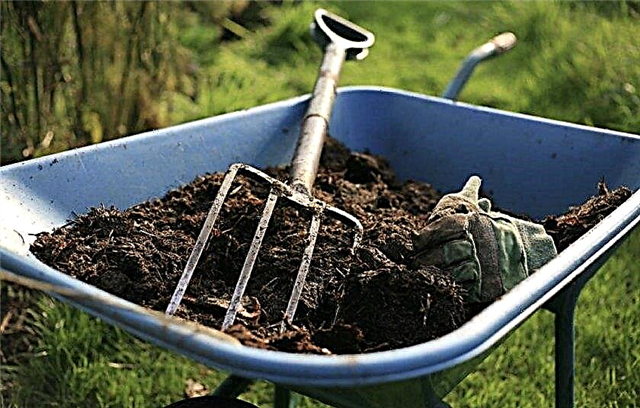
How to apply
Depending on the type of mullein, the features of its application will differ.
Fresh
Using fresh mullein without diluting it is not recommended. This is due to the fact that its composition contains a high percentage of ammonia, which has a detrimental effect on the rhizomes of plants. Fresh mullein is used to prepare the solution and fertilize the territory with it for the benefit of plants.
The introduction of fresh manure in undiluted form is practiced in the autumn, when the site is prepared for wintering. During the winter, he will cross and result in good fertile soil for spring planting.Important! Water is added to fresh manure, the proportions of the solution are individual and depend on the type of plant crops that grow on the fertilized area.
 In spring, fresh material is also used for the construction of "warm beds". The embankments (1 meter high) are able to warm up inside to +55 ° С, which allows influencing the development of plants when spring frosts still persist.
In spring, fresh material is also used for the construction of "warm beds". The embankments (1 meter high) are able to warm up inside to +55 ° С, which allows influencing the development of plants when spring frosts still persist.Dry substrate
Cow dung turns into humus after 2 years of maturation. Humus is characterized by friability, without impurities of liquid and unpleasant odor. Fertilizer in this form is most convenient for use. Humus is very much appreciated due to the possibility of use immediately before planting plants in the ground. Thanks to the loose structure, the fertilizer is very economically consumed.
Dry fertilizer does not contain moisture, and if even a small liquid content is found in the composition after buying or making fertilizer with your own hands, this indicates insufficient maturity of the humus.
Important! Dry mullein negatively affects the growth and development of onions and carrots, therefore, in the beds where these crops will be planted in the spring, it is not recommended to bring it under the autumn digging.
Liquid
Liquid fertilizer is made on the basis of fresh manure using water. The peculiarity of this fertilizer is that during the preparation process it is possible to significantly reduce the percentage of ammonia and parasite eggs that are always present in the feces of herbivores. They feed plants by adding diluted mullein infusion under the root. In the form of a weak solution, liquid fertilizer is used to spray plant crops, accelerating their growth and strengthening the ground part of the plant.
They feed plants by adding diluted mullein infusion under the root. In the form of a weak solution, liquid fertilizer is used to spray plant crops, accelerating their growth and strengthening the ground part of the plant.
Granulated
Mullein in granules is a biologically processed material that is suitably compressed. Due to the special structure of the material, it enriches the soil with useful substances gradually, throughout the season. It is able to absorb water and swell, and eventually give moisture to the soil, which is very convenient during a drought, as it allows you to keep the soil moderately moist for a long time. Granules are used as top dressing in the spring, during the planting period, but can also be applied in the fall, after harvesting, for digging the soil.
When not to use
Do not use fresh mullein to fertilize plants. In the process of decomposition of feces, chemical reactions occur that adversely affect the roots of vegetation.
It is also not recommended to use fertilizers that have white patches or plaque indicating the presence of fungal spores. Do not rush to throw out moldy manure, as in the process of decaying this problem will be eliminated, and as a result you can get high-quality fertilizer suitable for use.
Direct feeding of some plants with manure has a detrimental effect on the further growth process, so it is important to practice planting crops in soil that was fertilized with manure at least a year ago. Such plants include celery, parsley, carrots, beets and radishes.
How to make fertilizer from manure yourself
Due to the fact that the source material is very affordable, high-quality fertilizer can be prepared at home with your own hands, which is more profitable than the purchase of ready-made fertilizer. To make humus on your own, you need to prepare boxes of the appropriate size or dig a hole, while observing the basic conditions for storing mullein. The place of storage of mullein must be protected from precipitation and exposure to direct sunlight. The container or pit with manure should be covered with roofing material or other material that repels moisture. To speed up the process of natural processing of manure and its transformation into humus, it is necessary to carefully turn it over with a fork at least twice a season. The fertilizer will ripen in such conditions within 1.5–2 years.
To make humus on your own, you need to prepare boxes of the appropriate size or dig a hole, while observing the basic conditions for storing mullein. The place of storage of mullein must be protected from precipitation and exposure to direct sunlight. The container or pit with manure should be covered with roofing material or other material that repels moisture. To speed up the process of natural processing of manure and its transformation into humus, it is necessary to carefully turn it over with a fork at least twice a season. The fertilizer will ripen in such conditions within 1.5–2 years.
Very quickly you can make fertilizer in the form of infusion of fresh mullein. To do this, manure is poured into the barrel and water is poured in a ratio of 1: 1. The barrel is covered with a lid and left to ripen in the shade. To start active fermentation processes, it is recommended to mix the contents of the barrel several times a day with a long stick. Fermentation processes affect the reduction of ammonia impurities in the composition, destroy eggs of parasites and spores of the fungus. After a week, the fertilizer can already be used. Before applying fertilizing to the soil, the infusion is pre-diluted with water in a ratio of 1: 1.
Thus, cow manure is a universal organic fertilizer that is used fresh, processed or overripe to improve soil condition and structure, as well as to accelerate plant growth and achieve high yields. The main thing is to follow the recommendations on the time of fertilizing the soil and their quantity in order to achieve a good result.Did you know? Cow manure, due to its binding properties, is used for the manufacture of building materials, in particular, adobe.


